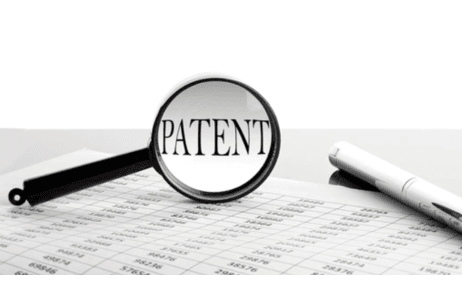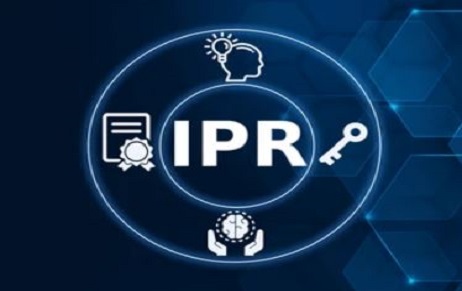Introduction In the realm of obtaining a patent right, conducting a ‘novelty search’ stands as…
Interpretation of Rule 2 f (fa) of the Patent Rules, 2003: Who can avail benefits under the Patent regime?
INTRODUCTION
Startups and small entities seeking patent protection for their discoveries are likely to gain greatly from India’s recent series of modifications to its Patent Rules. Overall filing and prosecution fees for startups and small entities have been drastically decreased as a result of these revisions. While the fees for small entities have been eliminated, entrepreneurs can keep their “startup” status for up to 10 years, allowing them to benefit from lower fees and other benefits for a longer period than before.
These changes are in sync with the government’s multiple attempts to boost entrepreneurship and startups in India. However, it is unclear if companies incorporated under the Micro, Small, and Medium Enterprises Development Act, 2006 (“MSMED Act of 2006”) are entitled to the same benefits for pursuing patent protection for their innovations.
WHAT IS A SMALL ENTITY?
A. Rule 2f (fa) of Patents Rules, 2003 defined “Small entity” as:
(i) in case of an enterprise engaged in the manufacture or production of goods, an enterprise where the investment in plant and machinery does not exceed the limit specified for a medium enterprise under clause (a) of sub-section (1) of section 7 of the Micro, Small and Medium Enterprises Development Act, 2006 (27 of 2006); and
(ii) in case of an enterprise engaged in providing or rendering of services, an enterprise where the investment in equipment is not more than the limit specified for medium enterprises under clause (b) of sub-section (1) of Section 7 of the Micro, Small and Medium Enterprises Development Act, 2006 (27 of 2006).
B. Benefits that Companies which are regarded as “Small Entity” can avail:
Expedited Examination Eligibility:
Under the Indian Patents Rules, applicants in the “Small Entity” category (Indian or foreign) may file a request for expedited examination in Form 18-A. It must, however, be accompanied by Form-28.
Reduced Government Fee:
The sorts of applicants for a patent application have been categorized into two categories as stated below, under the Patents (2nd Amendment) Rules, 2020, which were notified on November 04, 2020:
- Individual(s), startup(s), or small entit(y)/ (ies)
- Additional(s) (i.e. commonly called large entities)
Small Entities are now eligible for an 80% discount on IPO fees.
CONCEPT OF AN ENTERPRISE:
The Micro, Small, and Medium Enterprises Development Act of 2006 is the first-ever legal framework for recognizing the concept of an enterprise. The Act establishes a statutory consultation framework at the national level, with stakeholder representation and a variety of advisory functions. Previously (prior to the amendment), Section 7 of the MSMED Act divided enterprises into certain categories, the clause is reproduced below:
A. Section 7 of Micro, Small and Medium Enterprises Development Act, 2006 (27 of 2006)
(1) Notwithstanding anything contained in section 11B of the Industries (Development and Regulation) Act, 1951 (65 of 1951), the Central Government may, for the purposes of this Act, by notification and having regard to the provisions of sub-sections (4) and (5), classify any class or classes of enterprises, whether proprietorship, Hindu undivided family, an association of persons, co-operative society, partnership firm, company or undertaking, by whatever name called,—
(a) in the case of the enterprises engaged in the manufacture or production of goods pertaining to any industry specified in the First Schedule to the Industries (Development and Regulation) Act, 1951 (65 of 1951), as—
(i) amicro-enterprise, where the investment in plant and machinery does not exceed twenty-five lakh rupees;
(ii) a small enterprise, where the investment in plant and machinery is more than twenty-five lakh rupees but does not exceed five crore rupees; or
(iii) a medium enterprise, where the investment in plant and machinery is more than five crore rupees but does not exceed ten crore rupees;
B. PREVIOUS MSME CLASSIFICATION
| CLASSIFICATION OF AN ENTERPRISE | INVESTMENT IN PLANT AND MACHINERY |
| Micro-enterprise | Investment <Rs. 25 lakhs |
| Small enterprise | Investment <Rs. 5 Crore |
| Medium enterprise | Investment <Rs. 10 Crore |
However, the government introduced the recent Gazette in 2020 for the classification of the enterprise according to the investment in plant and machinery and the annual turnover. As per Section 7, in micro-enterprises, the investment should be less than 1 crore and the annual turnover should be less than 5 crores. In small enterprises, the investment should be less than 10 crores and the annual turnover should be less than 50 crores. In medium enterprises, the investment should be less than 50 crores and the annual turnover should be less than 250 crores.
C. REVISED MSME CLASSIFICATION
| CLASSIFICATION OF AN ENTERPRISE | INVESTMENT IN PLANT AND MACHINERY | ANNUAL TURNOVER |
| Micro-Enterprise | <1 Crore | <20 Crore |
| Small Enterprise | <10 Crore | <5 Crore |
| Medium Enterprise | <50 Crore | <250 Crore |
INTERPRETATION OF RULE 2F (FA) OF PATENT RULES, 2003
Considering the classification of MSMEs, it can be inferred, as per sec 7 of MSMED Act, since in order for a company to be classified as an enterprise, its ‘investment in plant and machinery or equipment is considered, therefore an enterprise registered under MSMED Act can be categorized under a “Small entity” based on the definition provided under Clause (i) of Rule 2f (fa) of Patent Rules, 2003. For e.g. If an enterprise registered under MSMED Act is having its investment in plant and machinery for an amount of 45,00,000 which does not exceed the limit specified (i.e. 50 Crore) for a medium enterprise under clause (a) of sub-section (1) of section 7 of the Micro, Small and Medium Enterprises Development Act, 2006 (27 of 2006), it makes it eligible to be considered and be categorized under the “small entity”.
Therefore, in light of the above interpretation, an applicant with MSME registered company is qualified to claim benefits under the Patents Act, 1970. It’s also essential to know that the government has recently made a number of efforts and implemented changes in the regulatory framework to protect ideas, technological innovation, and business strategies developed by MSMEs in particular and that such industries have experienced significant growth with the support from the Indian Government. Hence, an applicant registering an enterprise under the MSMED Act should also be able to take advantage of the benefits outlined in the Patents Act of 1970 and the associated laws that are expressly targeted towards “small entities.”
Author: Anuja Saraswat – an intern at IIPRD, in case of any queries please contact/write back to via email [email protected]



